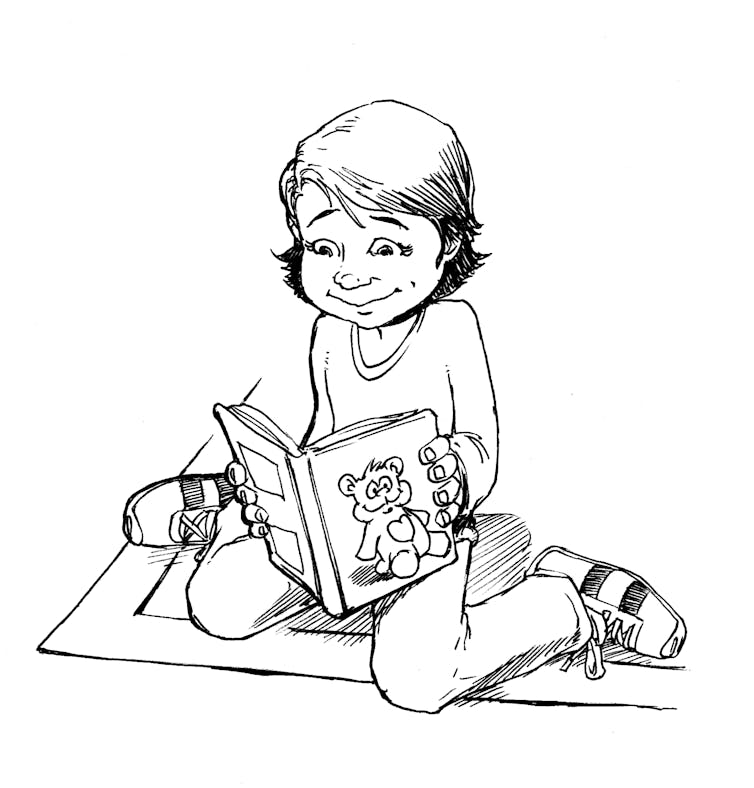Babies With Duck Feet Babies With There Feet Turning in
Babies regularly have their feet, legs and hips checked by their md in hospital, or at maternal and child-wellness nurse visits.
Equally children grow, parents are often concerned well-nigh their feet pointing inwards when they walk (also called in-toe or pigeon-toed walking) or outwards (also called out-toe walking or duck-footed).
These walking positions, commonly called "rotational deformities", often cause parents to seek the stance of an orthopaedic surgeon, physiotherapist or podiatrist for more specialised assessment.
Rotational deformities
When the leg or foot faces inwards or outwards during walking, it may be from a number of typical changes in the leg or foot.
When a baby is born they frequently have bowed or curved legs. This is thought to be considering of the position of the baby in the womb.
This position can remain and seem more obvious when the kid begins to walk. It may appear as if the feet face inwards. Sometimes children may appear to trip or autumn over their ain feet.
In-toe walking may come from a curved foot (metatarsus adductus) or an inwards twist in the leg bones (tibial or femoral torsion).
Similarly, out-toe walking may appear from the foot or leg. A foot that is very rolled in or "pronated" may appear as if it is pointing outwards. A leg may also turn outwards from the leg bones or the hip.
The flexibility of a child's joints or the way they utilize their muscles could also cause in-toeing or out-toeing. A twist in their bones is i possible contributing factor to in-toe or out-toe walking.
Curved anxiety
Metatarsus adductus is the most mutual foot deformity in infants. In metatarsus adductus, the pes has a curved or banana-shaped appearance. In 95% of cases, the human foot corrects itself with no handling.
In the past, it was recommended to put shoes on the wrong feet. This is no longer recommended as it may cause further foot deformity.
Sometimes treatment is needed. Plaster casting or splinting may be required to help the foot straighten if it doesn't on its own.
Parents should run into a health professional if their child'due south foot is curved, stiff and unable to exist straightened, or isn't straightening equally their kid gets older.
Twisted shin bones
Tibial torsion is where the lower leg or tibia turns in or outwards. An inward-turned tibia is common in children under the age of 3. It usually straightens after this age and sometimes even slightly turns outward with no treatment. These changes occur in children up to the historic period of eight.
Health professionals will sometimes recommend children with in-toe walking wear a type of orthotic called gait plates. While gait plates may provide some cosmetic issue when worn, at that place is no show they will result in long-term change.
Parents should be cautious virtually claims these devices will fix in-toe walking. They need to consider if the expense is worth it for something that will naturally go better on its ain. In that location is no good evidence stretches or footwear will modify this blazon of walking.
Turning in or outwards at the hip
Femoral torsion is where the upper leg bone (femur) or hip is turned in or outwards. Children may appear to walk with their feet in or outward. It also looks similar their knees indicate inwards or outwards.
The femur goes through many changes upward to the historic period of 12 and an inward turn at the hip is more commonly seen in girls. Rotational changes at the top of the leg are too a very normal part of growth.
Walking changes from the summit of the leg and hip sometimes appear more than common in children who ofttimes West-sit. This sitting position is with their lesser on the ground and legs folded outwards.

There is no research proving sitting like this is harmful, only therapists oft observe hip muscle tightness in children who sit this way and it may touch on the child's walking. As damage is unknown, it might be best to get children to sit or play in other positions.
There are no shoes, orthotics, garments, taping or stretches that have bear witness supporting them being used to change walking associated with these rotational changes. Parents should seek medical attention quickly if there is pain at the hip or hurting extends into the groin while walking at whatsoever historic period.
Children walk in-toe and out-toe for many reasons. Parents should see a health professional person if their child is tripping from their leg position when their child is school-aged, if i leg turns essentially more in or outwards than the other, seems longer or looks very different compared to the other.
For the bulk of children, in-toe or out-toe walking is just part of growth.
Source: https://theconversation.com/should-i-worry-if-my-child-is-pigeon-toed-or-duck-footed-67297
0 Response to "Babies With Duck Feet Babies With There Feet Turning in"
Postar um comentário